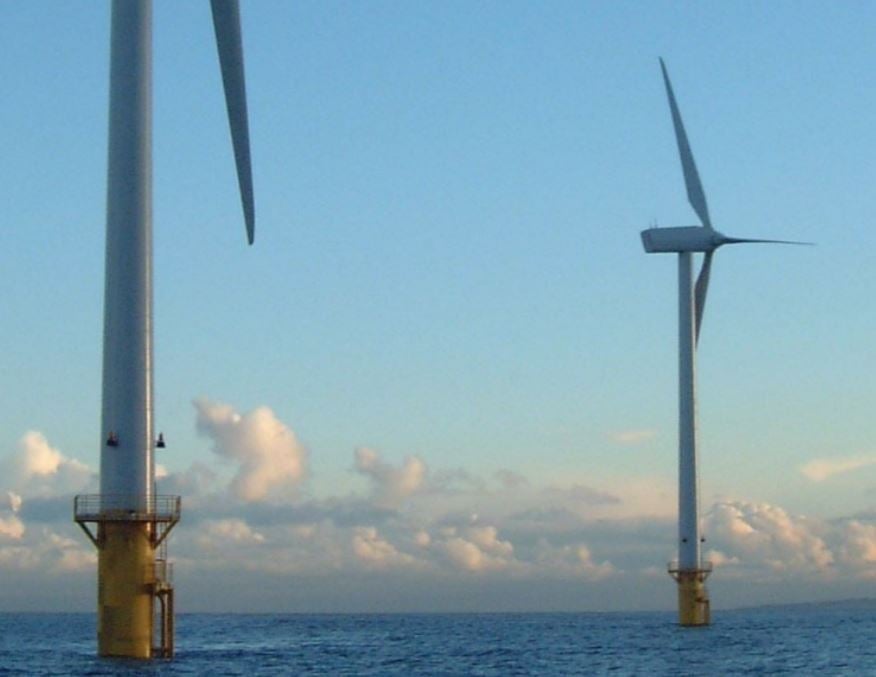
E.ON says it is decommissioning Blyth, the UK’s first offshore wind farm. The wind farm’s two 2-megawatt turbines were the country’s first offshore wind farm. The turbines, says E.ON, have reached the end of their technical lifespan.
E.ON was part of a consortium that built the turbines in 2000 of the Northumberland coast. Blyth generated enough power to supply 2,000 households with renewable energy. Each year, it saved 4,520 metric tons of CO2 (carbon dioxide).
According to an E.ON press release:
“Blyth ushered in a new era of renewable technologies. As an offshore wind pioneer, E.ON used this example to lay the foundation for the future of the technology. It has undergone rapid development. Since then, E.ON alone has installed a further 600 offshore wind turbines in the seas of northern Europe.”
“The legacy of the first British offshore wind farm is a test area in the Blyth region for the construction, operation and maintenance of offshore wind farms. This hub for innovation at sea is a starting point which has seen the UK subsequently develop into a world leader in offshore wind.”
The dismantling work, which will begin in April 2019, will take from four to six weeks. E.ON will recycle and reuse one of the turbines. The Port of Blyth will use the other one for training purposes.
What is wind energy?
Wind energy involves capturing the energy in moving air (wind) and converting it into electricity. We have been using wind energy in one form or another for thousands of years. Historically, we have used it to pump water and grind grain.
Wind energy is a type of renewable energy. In other words, the energy comes from a source that never depletes.
Solar energy, which involves capturing the energy from the Sun and converting it into electricity, is also renewable. So are hydropower, biomass energy, and geothermal energy.
